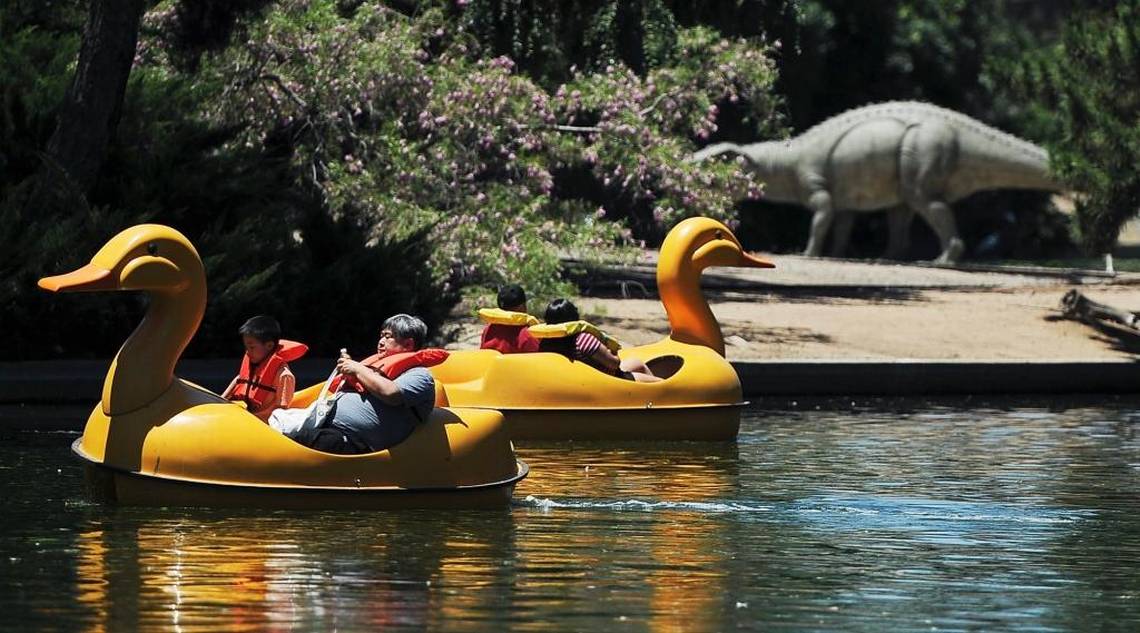
In the News
Fresno’s city parks need a champion
-
Focus Areas
Chronic Disease Prevention, Healthy Communities -
Issues
Physical Activity -
Expertise
Leadership Development -
Programs
Cultiva La Salud/Central California Regional Obesity Prevention Program

Fresno, we are better at preserving our parks, but that’s not even close to good. According to ParkScore, which is a park ranking list of the 100 largest U.S. cities developed by The Trust for Public Land, we are now ranked No. 90.
In 2016, we were ranked No. 97. And the year before that, we were in last place, at 100.
And if we want to improve that score, the Proposed City Budget for 2018, released May 23, doesn’t hold much good news. Currently, the PARCS portion (Parks, After-school, Recreation and Community Services) of the proposed budget will decrease by two percent in general fund dollars. This is part of an ongoing disturbing trend, as the PARCS budget has been so underfunded it cannot meet its operating needs or the full potential of a vibrant park system.
Our ParkScore improved because community residents and advocates pushed the city and local school districts for a joint-use agreement. The agreement opens school playgrounds and athletic fields for public use on weekends, thereby increasing green space in Fresno. However, we need to continue to advocate to get a parks system that is robust and equitable for all Fresno neighborhoods.
The benefits of parks are numerous, yet parks are non-existent in some portions of Fresno, depriving these neighborhoods of assets to health promotion, mental wellness, centers for celebration, and property values, among other value-adds. Only four percent of the city’s land is park space, and that small percentage is not evenly distributed.
ParkScore analyzed Fresno on overall availability of parks and on need, based on population density, density of youth 19 years and younger, and the density of households with incomes less than $35,000. To no surprise, the portions of Fresno with the greatest park needs are West Fresno and Southeast Fresno.
As a community, If we are going to work together to improve our parks, we need to start by acknowledging, and correcting, our past mistakes. Our parks have floundered because we’ve failed to plan for our park space and needs; we’ve allowed our parks budget to be woefully underfunded; and we’ve simply failed to ensure oversight and attention to our parks system.
Last year marked the beginning of the Parks Master Plan process. The last plan was completed in 1989, 28 years ago. Our failure to adequately plan has widened the chasm that divides Fresno between new neighborhoods in the north and older ones in south. But it’s also resulted in failing to maintain and update the parks that do exist.
Currently, only half of our population lives within a half mile of a park. This is a far cry from the goal set in the Fresno General Plan, which calls for five acres of park space per 1,000 residents. Fresno has a population close to 500,000, which means if we met our goal, we’d have 500 acres of park space in Fresno. To reach this goal we need to ensure that the Parks Master Plan addresses the inequity in park-poor neighborhoods, in addition to providing a roadmap to ensure that we renovate languishing parks and adequately maintain and preserve our existing parks.
If we want to preserve our parks, we need to increase the funds we allocate to preserving them.
Our budgets are statements of our values and clearly, our decision makers, deliberating on the budgets, have not valued the importance of parks. For example, wouldn’t we be better served at preventing crime and violence by increasing resources aimed at fostering relationships and building bridges with community residents through parks and recreational programs? We should connect police officers to parks and recreation which would connect with youth engagement. Other cities do this with great success. We should, too.
Our advocacy for parks cannot stop at the end of the Parks Master Plan process. We must build the structures that allow us to continuously inform and advise our decision makers and the PARCs Department of our interests. Installing a Parks Advisory Committee, just like other department committees, would be an asset to ensure that we never fall behind in addressing our park needs.
Originally published by The Fresno Bee
More Updates
Work With Us
You change the world. We do the rest. Explore fiscal sponsorship at PHI.
Support Us
Together, we can accelerate our response to public health’s most critical issues.
Find Employment
Begin your career at the Public Health Institute.



